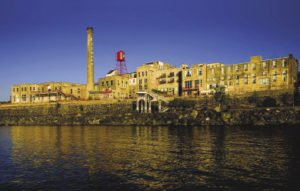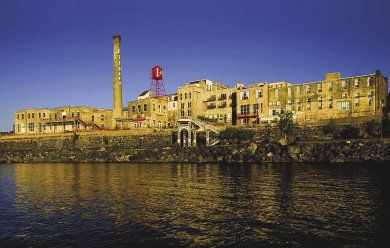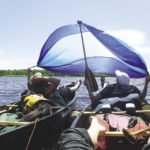Duluth—The next time someone hooks a lake trout in Lake Superior, they might have the Minnesota Department of Transportation (MnDOT) to thank for it.
And while it might seem an odd pairing, MnDOT did make a sizeable effort in the early 1980s to build spawning grounds for lake trout in Lake Superior. A fine idea for anglers and public relations, perhaps, but one that came about when the tunnels in Duluth were being blasted and created.
“The truth is, it was a convenient way to get rid of a lot of rock,” said Cory Goldsworthy, DNR Lake Superior Area Fisheries supervisor.

Crews began digging the I-35 tunnels through sections of Duluth in 1983. A total of 179,000 tons of gabbro volcanic rock was excavated in the process. A large percentage of the rock was used to expand the Duluth Lakewalk, which extends between Canal Park and S. 60th Avenue E. near University Park. The rock from the tunnels was used specifically to build a wider strip of beach along the Lakewalk.
The leftover rock from excavating the tunnels was used to build a 1,200-foot-long submerged trout spawning reef behind the Fitger’s complex. Officially, the artificial reef was built to address concerns about the environmental impact of the new Lakewalk beach near Lake Superior. A good gesture on the surface, but there is a belief that the rock was dumped on a natural lake trout spawning reef on the remains of Duluth’s old wharf site, just west of Fitger’s. Today, the area in Lake Superior is known as the Fitger’s Reef Refuge.
And while it may have been deemed a move to increase fish-spawning habitat or as an act of good will on the part of MnDOT, the creation of the reef did raise a few eyebrows. In 1990, the Great Lakes Fishery Commission—an international organization that studies and reports on how to best manage waters in the Great Lakes region—released a document known as the International Position Statement and Evaluation Guidelines for Artificial Reefs in the Great Lakes. Among the findings in the publication was this statement: “Under no circumstances should artificial reef development be used as a pretext for the disposal of terrestrial refuse in the aquatic environment.”
The one certainty about the Fitger’s Reef Refuge is that lake trout do indeed spawn there each fall. Goldsworthy said it’s more of a mystery to know if the contents of the MnDOT tunnel project contributed to, or improved the habitat for spawning.
“We don’t know how much it really improved this specific location for spawning,” Goldsworthy said. “But we wouldn’t promote that something like this should take place again. We have more important things we could focus on for lake trout rather than just simply throwing rock in the lake.”
According to the Minnesota DNR, lake trout are the top predator in the Lake Superior fish community and they’re what most anglers try to catch. Goldsworthy noted that to ensure a healthy population, resource managers need to know where their spawning areas are. Goldsworthy said natural reefs found near the Gooseberry River and another near Two Harbors are locations where lake trout are known to spawn. Regardless of where lake trout spawn in Lake Superior, natural reproduction and solid recruitment are the key factors for a healthy population of the fish in the lake.
Perhaps MnDOT was simply looking for a place to dump rock after digging the tunnels of I-35 through Duluth. And if by dumping the rock in Lake Superior they created suitable habitat for lake trout in the process, in this instance that appears to be a legitimate solution to the age-old question often associated with development or uprooting the earth. And that question is, “Where are we going to put all this waste?”
For Goldsworthy, he answered it simply with regard to the Fitger’s Reef Refuge. “In this case, it did appear to be a win-win.”




